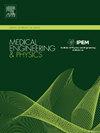结合通道选择的STA-EEGNet对二维和三维虚拟现实中诱发的脑电进行分类
IF 2.3
4区 医学
Q3 ENGINEERING, BIOMEDICAL
引用次数: 0
摘要
虚拟现实(VR),特别是通过3D演示,可以显著提高游戏、教育和医疗保健等领域的用户参与度和任务效率,提供比传统2D格式更具沉浸感和互动性的体验。本研究研究了2D和3D VR刺激下的脑电分类,以加深我们对驱动VR交互的神经机制的理解,并对脑机接口(bci)产生影响。本文介绍了一种创新的STA-EEGNet模型,该模型通过结合时空注意(STA)来增强EEGNet,从而改进了VR环境下的脑电信号分类。采用单因素方差分析(ANOVA)优化通道选择,提高模型准确性。对比实验表明,STA-EEGNet在信道选择下优于传统的EEGNet,峰值准确率达到99.78%。这些发现强调了时空注意和最优通道选择对vr诱发脑电数据分类的好处。该研究强调了将时空注意力与紧凑卷积神经网络(如EEGNet)相结合的重要性,不仅可以改善脑电信号分类,还可以推进神经解码和优化脑机接口应用。本文章由计算机程序翻译,如有差异,请以英文原文为准。
A novel STA-EEGNet combined with channel selection for classification of EEG evoked in 2D and 3D virtual reality
Virtual reality (VR), particularly through 3D presentations, significantly boosts user engagement and task efficiency in fields such as gaming, education, and healthcare, offering more immersive and interactive experiences than traditional 2D formats. This study investigates EEG classification in response to 2D and 3D VR stimuli to deepen our understanding of the neural mechanisms driving VR interactions, with implications for brain-computer interfaces (BCIs). We introduce STA-EEGNet, an innovative model that enhances EEGNet by incorporating spatial-temporal attention (STA), improving EEG signal classification from VR environments. A one-way analysis of variance (ANOVA) was utilized to optimize channel selection, enhancing model accuracy. Comparative experiments showed that STA-EEGNet surpassed traditional EEGNet, achieving a peak accuracy of 99.78 % with channel selection. These findings highlight the benefits of spatial-temporal attention and optimal channel selection in classifying VR-evoked EEG data. This study underscores the importance of integrating spatial-temporal attention with compact convolutional neural networks like EEGNet, not only improving EEG signal classification but also advancing neural decoding and optimizing BCI applications.
求助全文
通过发布文献求助,成功后即可免费获取论文全文。
去求助
来源期刊

Medical Engineering & Physics
工程技术-工程:生物医学
CiteScore
4.30
自引率
4.50%
发文量
172
审稿时长
3.0 months
期刊介绍:
Medical Engineering & Physics provides a forum for the publication of the latest developments in biomedical engineering, and reflects the essential multidisciplinary nature of the subject. The journal publishes in-depth critical reviews, scientific papers and technical notes. Our focus encompasses the application of the basic principles of physics and engineering to the development of medical devices and technology, with the ultimate aim of producing improvements in the quality of health care.Topics covered include biomechanics, biomaterials, mechanobiology, rehabilitation engineering, biomedical signal processing and medical device development. Medical Engineering & Physics aims to keep both engineers and clinicians abreast of the latest applications of technology to health care.
 求助内容:
求助内容: 应助结果提醒方式:
应助结果提醒方式:


